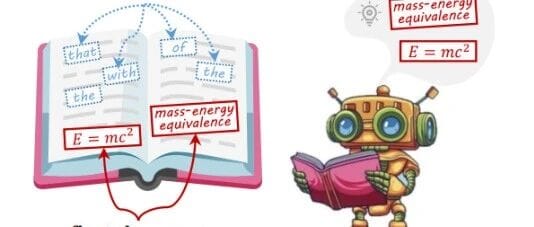
# AI-Assisted Engineering vs. Vibe Coding: Balancing Speed and Quality
Atmosphere (or **Vibe**) coding emphasizes **rapid prototyping and exploration**, while **AI-assisted engineering** insists on **human control of architecture, code review, and production quality**.
This guide explores how AI reshapes engineering workflows, examines trade-offs between speed and rigor, and explains why understanding generated code is essential.
---
## 📌 Introduction: Why Engineering Discipline Matters
The distinction between *Vibe Coding* and *AI-assisted engineering* is critical.
Without disciplined thinking and rigorous methods, projects risk becoming fragile and unmaintainable.
- **Specification-driven development** — having a clear build plan — greatly improves the effectiveness of large language models (LLMs).
- **Thorough testing** — reduces the risks of depending on LLM-generated code.
Maintaining these practices ensures **robust, production-ready software**.
---
## ⚖️ Vibe Coding vs. AI-Assisted Engineering
**Vibe Coding**
- Immersion in AI creative flow.
- High-level prompts, quick iterations.
- Ideal for prototypes, MVPs, and early exploration.
- *Downside:* Often sacrifices correctness and maintainability for speed.
**AI-Assisted Engineering**
- AI is a **collaborator** throughout the development lifecycle.
- Human engineer controls architecture and quality.
- Focus on scalability, security, and maintainability.
> ❗ Do not undervalue engineering discipline or misinform newcomers about production requirements.
---
## 👩💻 Human Control in AI-Assisted Workflows
In AI-assisted engineering:
- The engineer keeps **architectural responsibility**.
- Most AI outputs require **human review and understanding**.
- Accountability for production quality remains with the human.
- Senior expertise yields better LLM results.
- Junior engineers should only commit code they can **explain completely**.
---
## 🔍 How Addy Uses AI Tools
- **Primary focus:** Specification-driven development.
- **Vibe coding:** Still useful for personal or exploratory tools.
- Use prototypes in PRs or chats to **communicate vision quickly**.
---
## ✨ “Vibe Coding” Magic in Prototyping
Pros:
- Instantly generate running versions from prompts.
- Great for idea demonstration.
Cons:
- Misses institutional and historical context.
- Fails without integration into existing roadmaps and customer requests.
**Best Practice:**
Once a prototype works, shift to **clear requirements** and **rigorous engineering** before production deployment.
---
### ✅ Quick Best Practices
- Use **precise specifications**.
- Test for correctness, especially where AI outputs complex code.
- Give AI feedback with tools like Chrome DevTools MCP to visualize rendering.
---
## 🏆 Lessons from Enterprise & Startup Environments
At Google and startups:
- Long-standing methodologies remain unchanged in their emphasis on **quality**.
- **Prompt Engineering** and **Context Engineering** are vital:
- Craft precise prompts.
- Populate the context window with relevant project materials.
- Always consider *how AI would solve a problem* before manual effort.
---
## 📊 Risks & Countermeasures
| Scenario | Risk | Countermeasure |
|-------------------------|-----------------------------------------------|----------------|
| AI-generated code | Reviewer may be less vigilant | Full, detailed human review — avoid “LGTM” shortcuts |
| AI reviewing code | Blind spots may reduce final code quality | Treat AI review as **just a signal**, always validate manually |
---
## 🔧 Favorite Tools
- **VS Code Klein** / **Cursor** / **Co-pilot**
- Inspect AI reasoning and decisions before merging.
---
## 🧠 Understanding Code = Long-Term Value
Without comprehension:
- Debugging feels like navigating a jungle blind.
- Professional engineers use AI *and* manually debug when necessary.
- Beware of **technical debt** with multi-agent workflows.
---
## 💡 The “70% Problem”
- LLMs excel at generating the first ~70% of code.
- Final 30% = Edge cases, maintainability, security.
- Avoid patterns like *“two steps back”* where AI rewrites functioning code.
---
## 🚀 Strategies for Effective LLM Use
1. **Measure precisely** — Use data-driven decision tools (e.g., Static).
2. **Break tasks down** — Avoid dumping all specs into LLM at once.
3. **Control context** — Modular, testable code + proper reviews.
4. **Maintain control** — Ensure you understand AI outputs.
---
## ⚙️ Evolution of Tools
From templates to CLI scaffolds → AI speeds starts even more, but responsibility for output remains with you.
---
## 🎯 Realistic Expectations
- LLM training data = common public code patterns (not always optimal).
- Set modest expectations.
- Avoid "Stack Overflow copy-paste" practices without full review.
---
## 🤖 Autonomous Agents
- Handle small, explicit tasks well.
- Must remain **human verifiable**.
---
## 👥 AI Agents in Product Design
- Designers using dev tools (e.g., Cursor, Shopify prototypes) improve collaboration.
- **PMs** focus on framing problems and metrics for AI agents.
- **EMs** focus on safety reviews and Evals.
- **Senior engineers** become more critical for architectural guidance.
---
## 🛡️ Avoiding Review Fatigue
- “LGTM Syndrome” is dangerous — overtrusting AI outputs.
- Consider **No-AI Days** to maintain problem-solving muscles.
---
## 📚 AI as a Learning Tool
- Use LLMs to learn the codebase before building features.
- Accelerates onboarding without draining senior engineers.
---
## 🧭 Leadership’s Role
- Encourage experimentation.
- Share AI engineering progress regularly.
- Use side projects to explore models/tools.
---
## 📖 Recommended Reading
- **Favorite Language:** JavaScript (open and gatekeeper-free).
- **Recommended Tool:** Bolt (StackBlitz) for vibe coding.
- **Books:** *AI Engineering* (Chip Huyen), *The Software Engineer Guidebook*.
---
## ❓ Key Q&A
**Difference between Vibe Coding & AI Engineering?**
Vibe = fast experimentation; AI Engineering = controlled architecture + production standards.
**Addressing the 70% Problem?**
Specification-driven dev + task breakdown + rigorous human review.
**Avoiding LGTM mindset?**
Deliberately solve problems without AI periodically.
**Skill gap between juniors and seniors in AI dev?**
Seniors can solve the “last 30%”; juniors often rely on repeated prompting.
**Using LLMs for onboarding?**
Learn architecture & codebase with AI explanations before requesting feature builds.
---
## 📌 Morning Read Insights
1. Differentiate prototyping from disciplined engineering.
2. Specification-driven development improves output quality.
3. Testing mitigates AI risk.
4. Human review becomes a bottleneck if skipped.
5. Expertise amplifies AI impact.
6. LLMs stall at the “last 30%.”
7. Use AI as a learning accelerator.
---
**Original source:** [https://www.youtube.com/watch?v=dHIppEqwi0g](https://www.youtube.com/watch?v=dHIppEqwi0g)
For more info on cross-platform AI workflows, see:
- [AiToEarn官网](https://aitoearn.ai/)
- [AiToEarn博客](https://blog.aitoearn.ai)
- [AiToEarn开源地址](https://github.com/yikart/AiToEarn)




